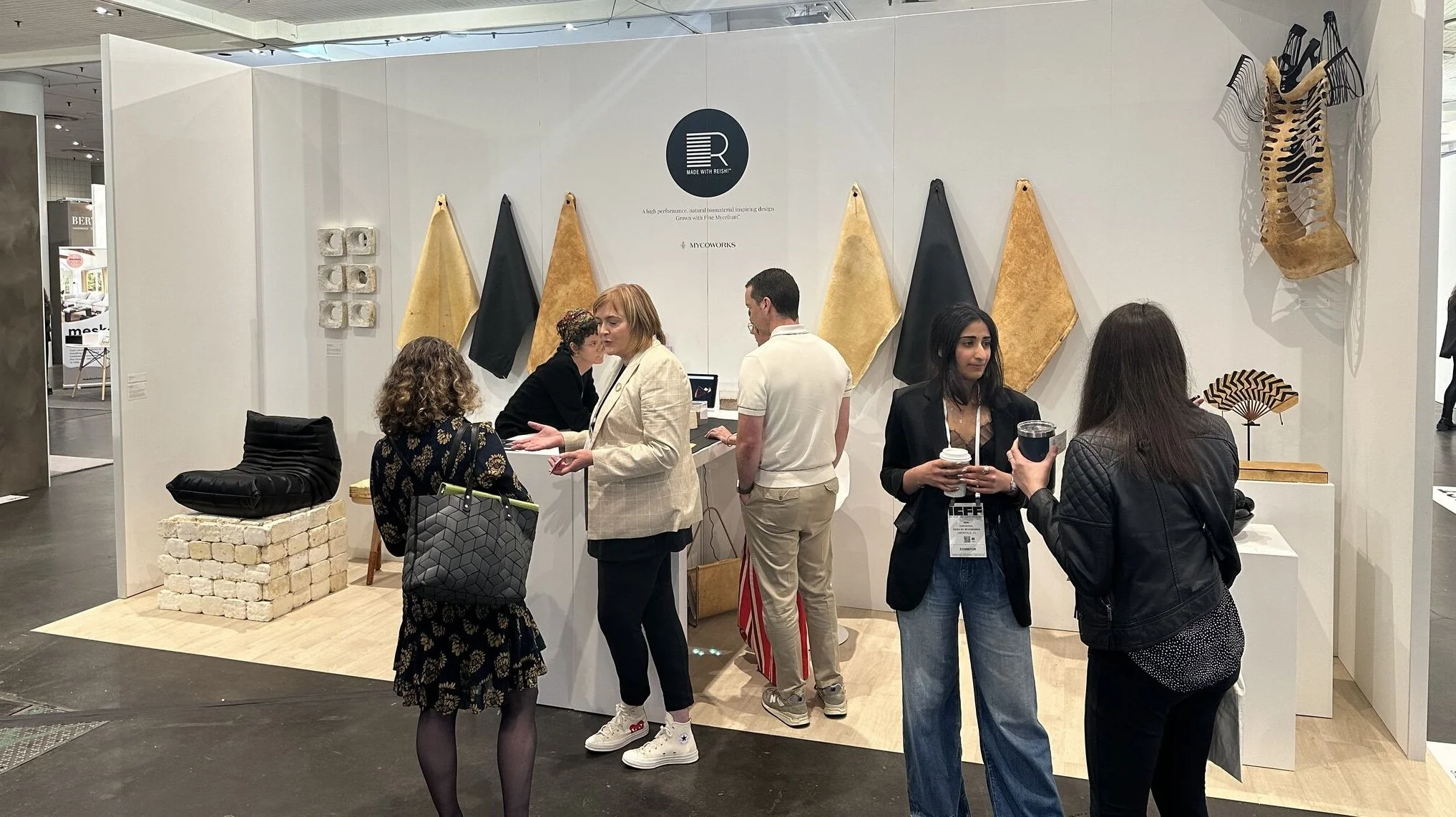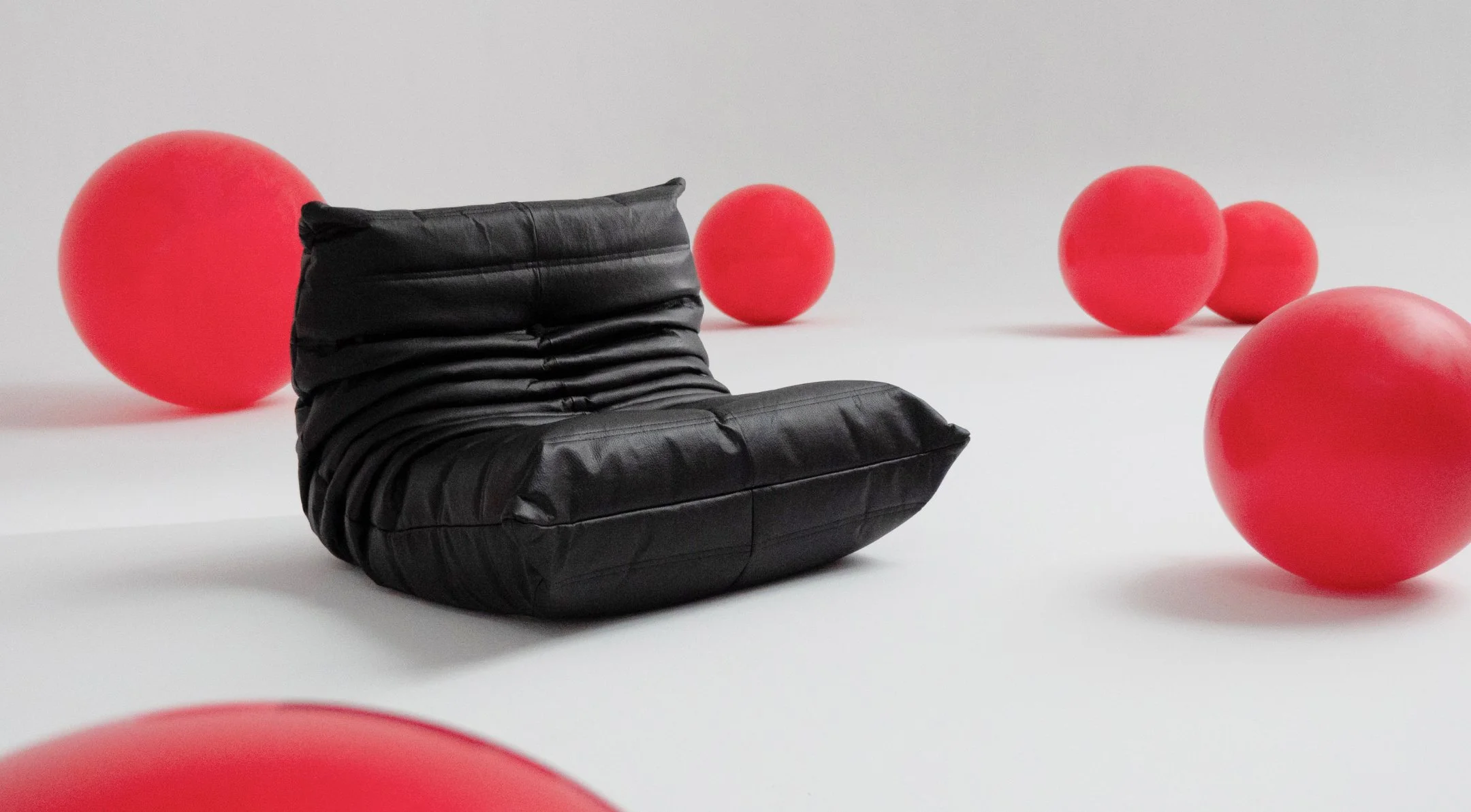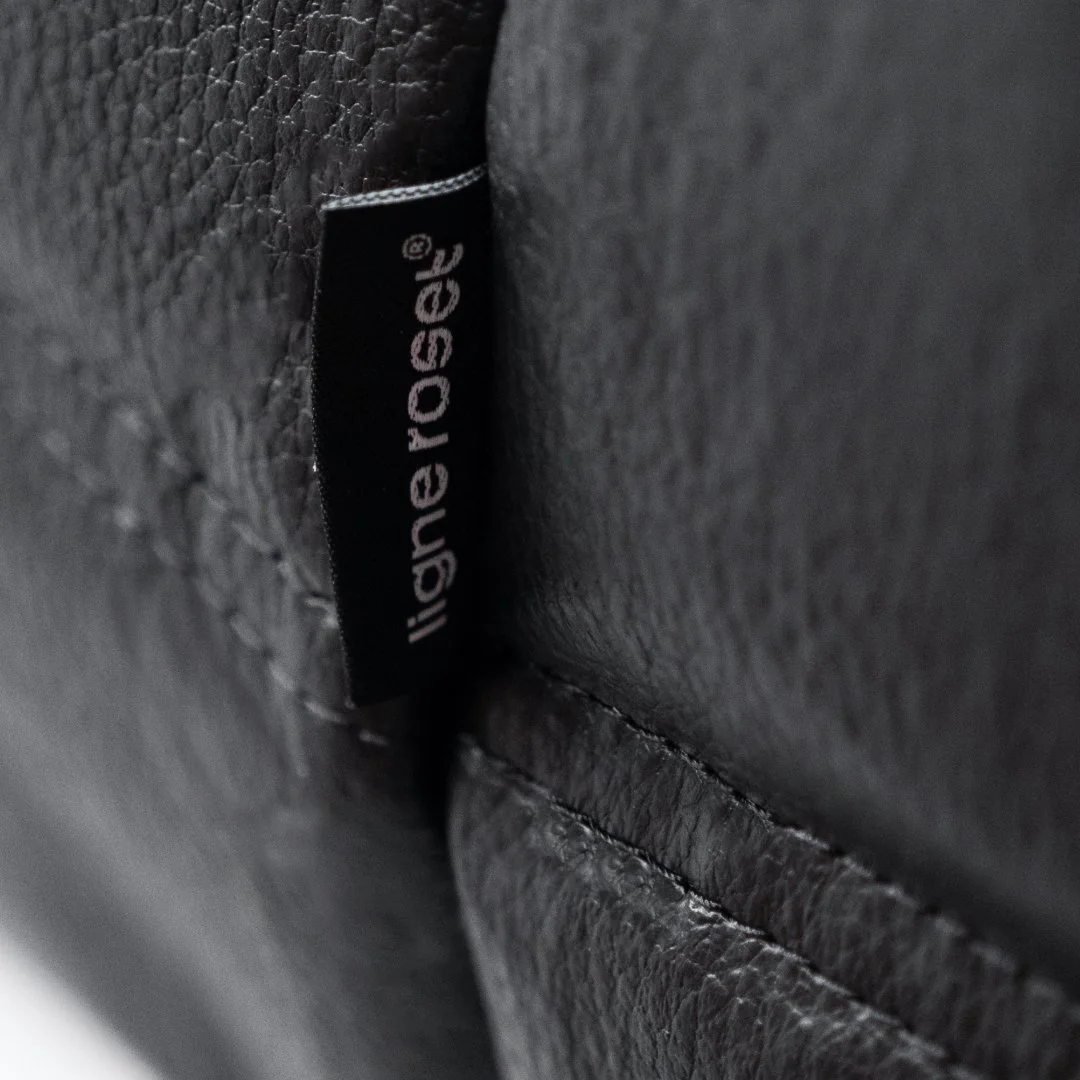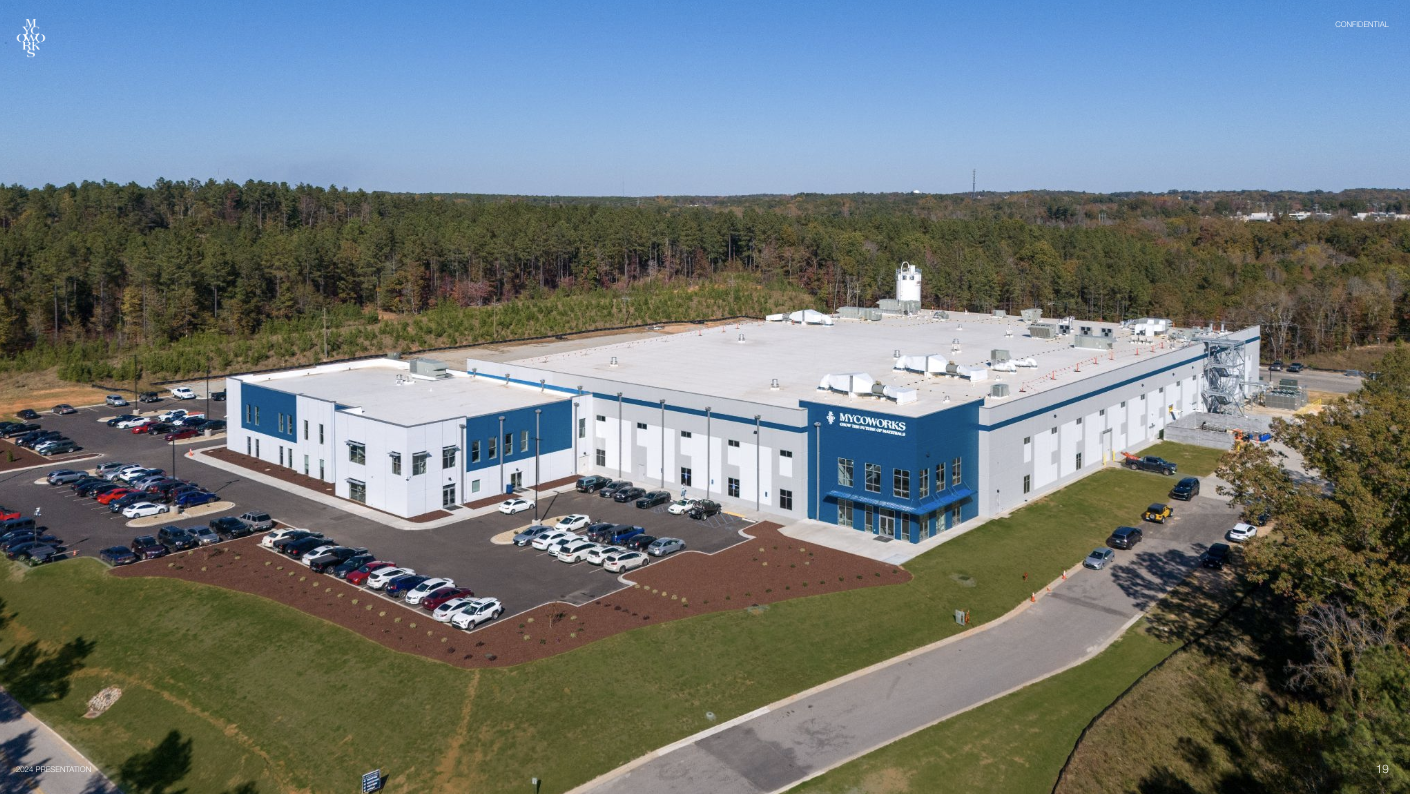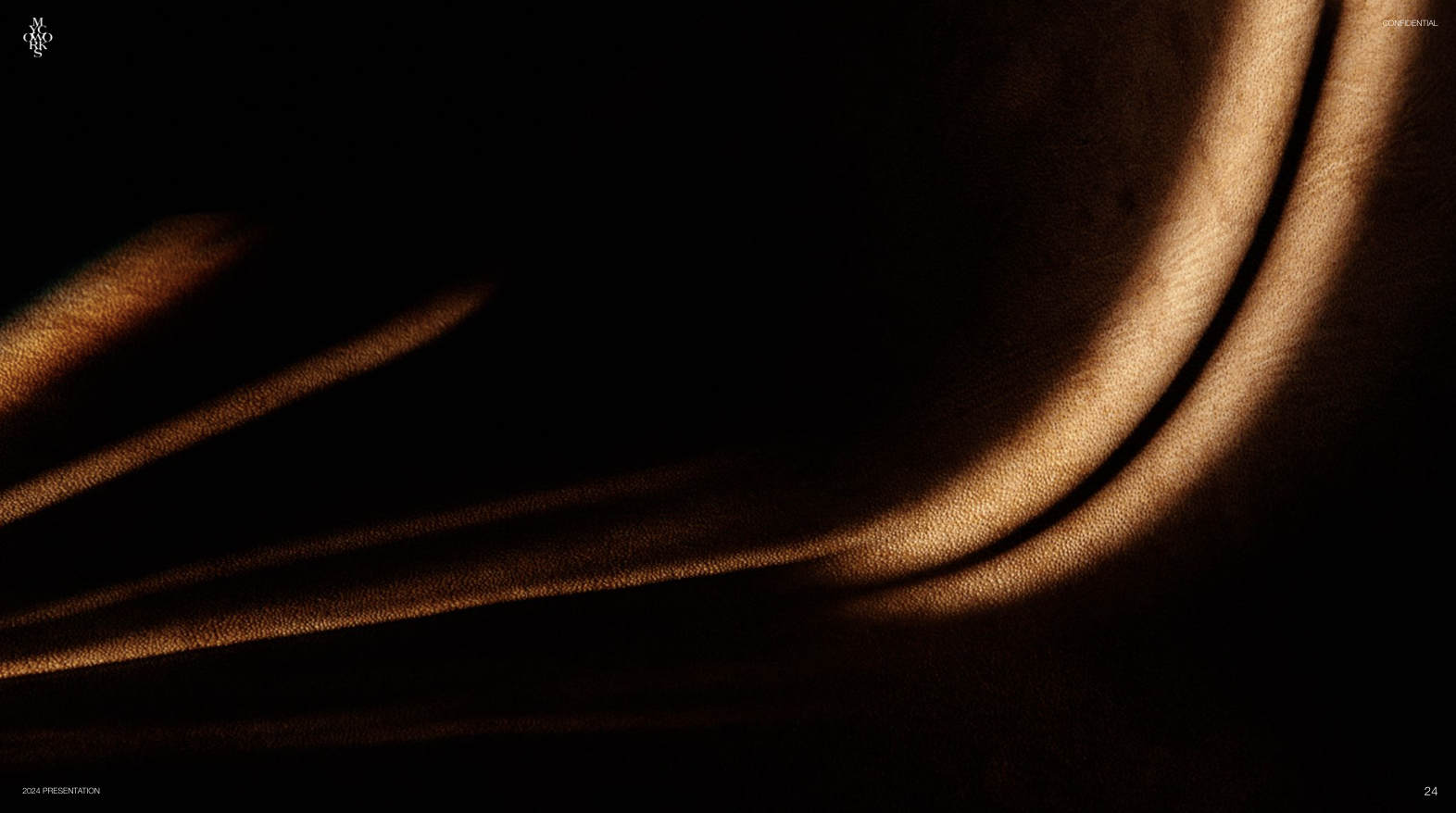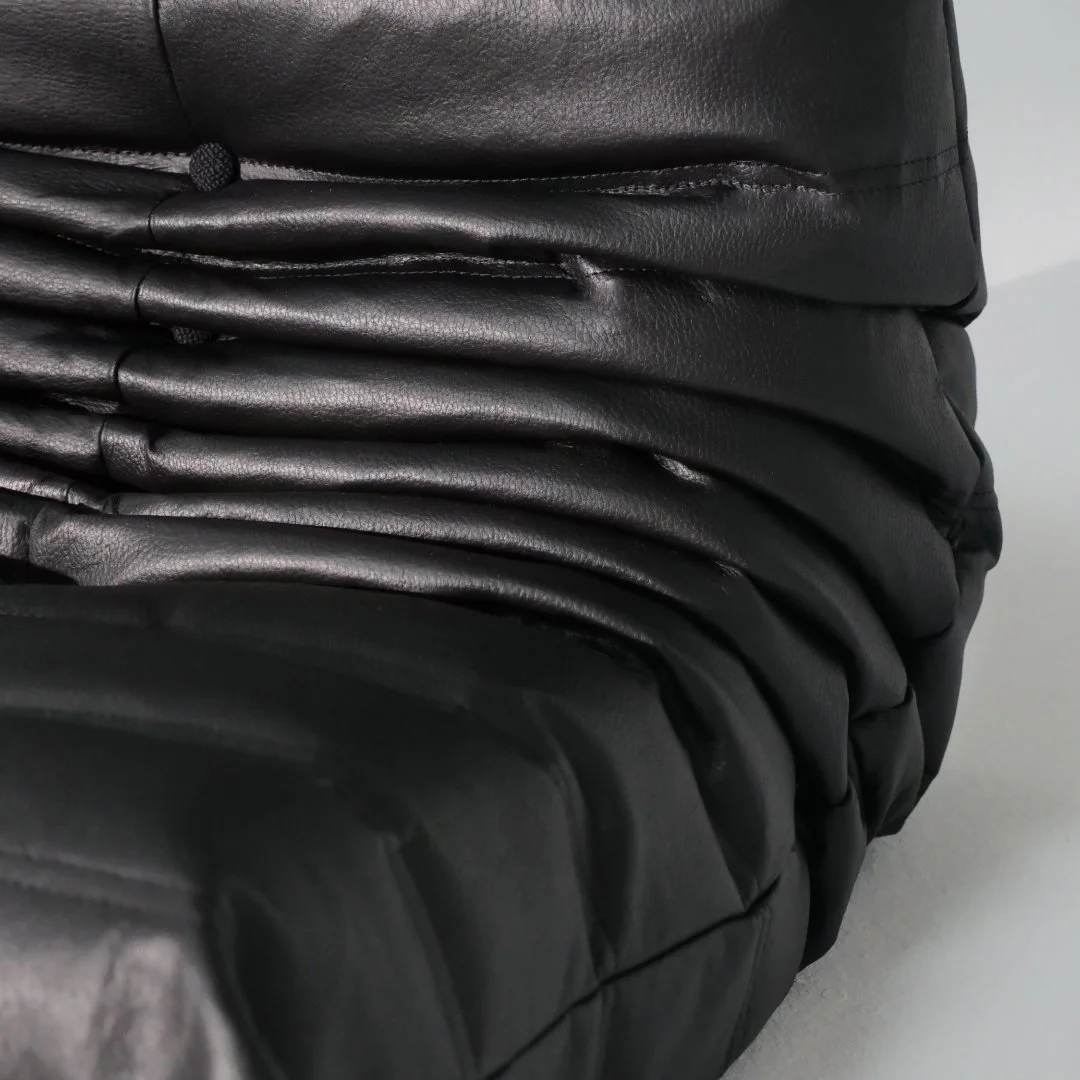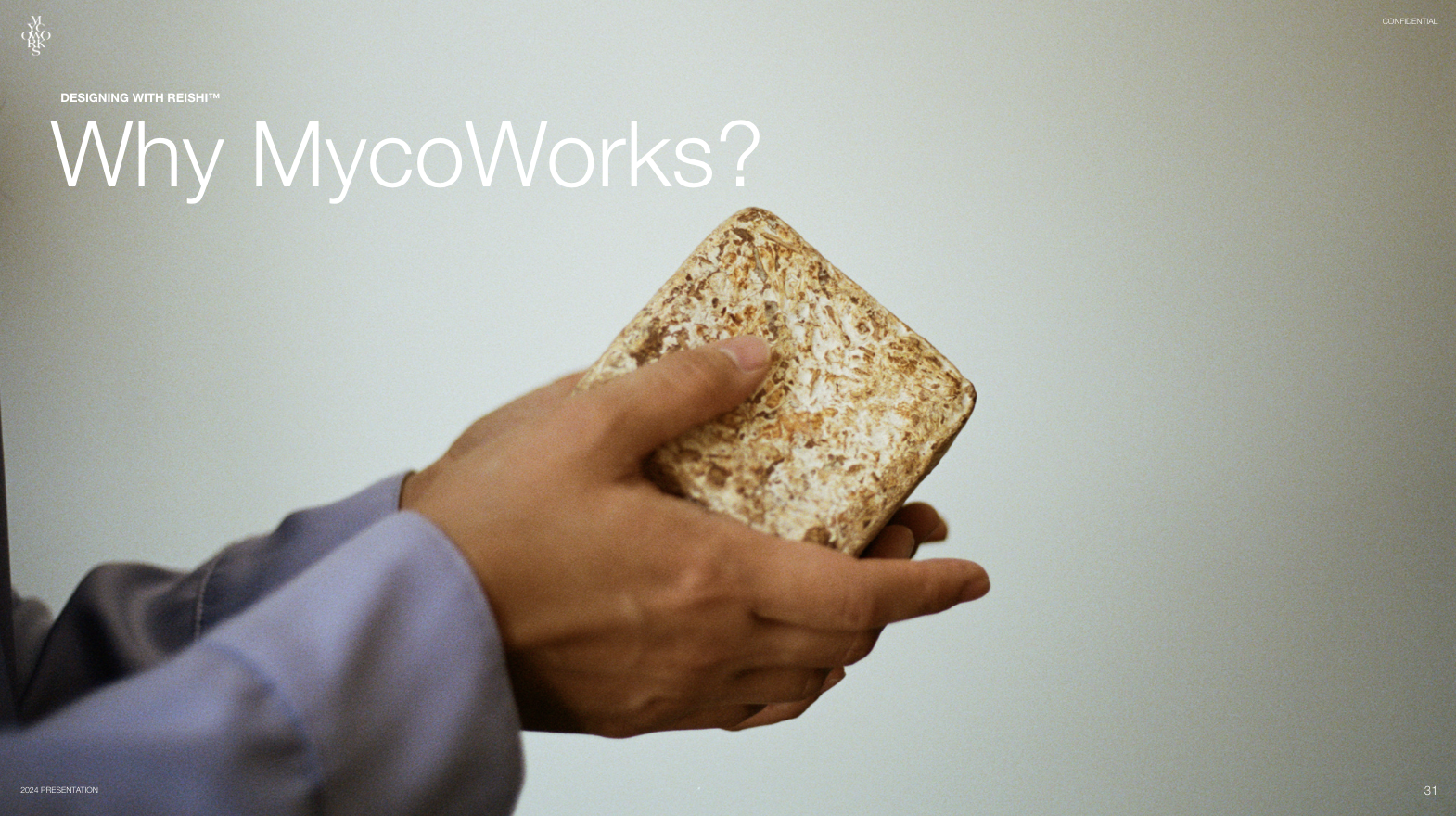Javits Center Talk / Reishi: An Environmentally Friendly Material for Scalable Design
Panel talk presented by Frederick Martel, SVP of Business Development at MycoWorks.
Authored and edited by Marian Halls in collaboration with the MycoWorks communications team.
All photography courtesy of MycoWorks.
Frederick Martel, SVP of Business Development at MycoWorks
May 20, 2024 |
Panel presentation at The International Contemporary Furniture Fair (ICFF), North America’s leading platform for contemporary furnishing design
The Populus Hotel in Denver is a scalable example of what high-design with nature can look like.
Designed by renowned architect Jeanne Gang, the entire hotel evokes Colorado’s native Aspen tree. Opening this summer, the hotel will be the world’s first to commit to net-zero.
Last year, interior design firm Wildman Chalmers created a sculpture using Reishi, MycoWorks’ flagship material, for the Populus entryway.
The Reishi installation at Populus is more than a sculpture—it’s a light source. This use case for our material shows how well Reishi works with light and heat. Reishi offers opportunities for any designers and architects who want to explore a new material with an open, innovative mindset. It has warmth and beauty and an incredible hand feel. It can define the character of a room.
Reishi is in a category of its own.
Partnering with nature can be an unexpected adventure. MycoWorks co-founder Phil Ross, a chef, naturalist and sculptor, learned this as he began cultivating mycelium for art and design in the 1990s.
He coined the term “mycotecture” to describe the art of designing and building with mycelium. The early discoveries of what would become Reishi were found on the forest floor, sparked by patient observation of nature’s intelligent processes.
In 2013, Phil and fellow artist Sophia Wang founded MycoWorks, fine-tuning what would become our Fine Mycelium technology. Phil’s patient study of mycelium’s growth patterns was the beginning of thirty years of expertise for MycoWorks. MycoWorks has built on our founders’ know-how, and today MycoWorks is leading the biomaterials revolution.
~
Phil Ross was the first to discover what is now becoming clear to everyone: mycelium is a structural marvel. It’s a living fiber that can grow in a triple helix structure.
Mycelium’s distinct growth pattern isn’t replicated anywhere else. The species of mycelium we use to grow Reishi can be cultivated to yield a material ten times stronger than the mycelium you find in nature.
~
That is our savoir-faire: through years of research we have coaxed mycelium to intertwine as it grows.
We’ve developed a process that grows a remarkably strong material, a second skin. That means we don't rely on plastic for performance—we have a technology that grows Reishi to be naturally strong.
We’ve built a foundational partnership with Hermès on our shared value: a patient commitment to quality.
Our strategic partners also include GM and Ligne Roset. Together, we’re exploring the possibilities of Reishi as a natural, sustainable material that meets their quality standards.
What drives these partnerships?
- The handfeel, aesthetics, and performance of our innovative material,
- the unique opportunity to be the first to explore and present Reishi in their product lines,
- and the chance to be first movers in a new field of environmental high-design.
Our partners are finding something with Reishi they can’t find elsewhere: the aesthetics we experience with legacy materials paired with a completely new element of nature for designers to explore.
In 2023, Ligne Roset announced plans to incorporate new low-impact materials like Reishi across their product stream.
Our furniture partner since 2022, Ligne Roset is leading the way in design and sourcing innovation, dedicated to environmental stewardship for their designs Made In France. The Mini Togo prototype, which you see in our booth, is an instance of how they are developing Reishi for complex furniture applications.
In fact, Ligne Roset was the first company to reserve capacity from our new facility in South Carolina. Our strategic partners have been impressed with the quality of sheets we’ve produced since 2021 at our pilot plant in San Francisco.
To meet increasing demand, in October 2023 we opened a full-scale factory in South Carolina, a former American textile hub.
Our plant is reshoring hundreds of jobs in a new industry fit for the 21st century: biomaterials. Building on a unique reusable and stackable tray-based system, MycoWorks has designed our Fine Mycelium™ technology for scalability. Our process also allows us to streamline our supply chain and materials sourcing.
The Fine Mycelium process starts inside our trays, using only four ingredients—sawdust, bran, water, and mycelium spawn —in a passive growth process.
This allows for one of the lowest carbon footprints in high quality materials, sitting as low as 2.6 kilograms of carbon per meter squared. Over the course of a few weeks, mycelium grows across each tray.
Trademarks of our process
Customizable, batch by batch. Clients can optionally add a fabric, like cotton, to create materials of increased performance, or to grow-to-spec a material for drape, weight or thickness. With our tray system, MycoWorks can grow sheets batch by batch under fully controlled and engineerable conditions, allowing for much higher material consistency.
Heritage partner tanneries. Our North Star is always hand feel and aesthetics, and our partner tanneries are a cornerstone of our quality achievement. Each Reishi sheet is finished at one of our partner tanneries, who use a chromium-free tanning process. Finished Reishi is a uniform rectangular sheet, matching the size of the tray in which it’s grown. Our current trays are 60 x 90cm (2x3 ft), a size that supports efficient pattern cutting and minimal offcut waste across different industries.
Traceability. Fine Mycelium™ now provides a traceability and transparency feature for its clients that is unheard of in the procurement of natural materials. Each sheet is engraved with a unique code matched to the QR code of the tray it was grown in. These QR codes allow MycoWorks’ to monitor and fine-tune growth in its process, tray by tray. Clients can now trace the product from the strain of mycelium to when it leaves the facility to our partner tanneries.
Reishi is biodegradable, with a low carbon footprint of 2-6 kg per meters squared. That is a fraction of plastic alternatives and other materials available today. Our process and materials are grown plastic free, though clients do have a choice of no or low plastic at the finishing stage.
As you may be starting to see, Reishi is entirely new, precious, and rare—the first precious mycelium material.
With over 80 patents protecting our IP, Reishi can’t be replicated. Although we are scaling up, Reishi remains a sliver of the luxury leather market, and an even smaller fraction of the market for exotic skins.
What makes Reishi unique? It feels alive—offering immediacy, warmth, and the same connection to nature that we might feel with calfskin or wood.
The growth process harnesses mycelium’s distinctive growth pattern, rendering each sheet a work of art with its own signature.
As brands and designers find inspired ways to create with our material, they do so knowing that it’s helping them reach their commitment to sustainability.
And what’s even more exciting? Brands and designers recognize the opportunity to craft—not only a precious material—but with one of the rarest on the market today.
I’m excited to share some of our recent successes from over the last few months.
First, Ligne Roset recently released the first prototype of a Mini Togo—an iconic design—made with Reishi. It’s at our booth today, waiting to be seen! Reishi Togos are still in development. Ligne Roset partnered with MycoWorks to show that heritage design and sustainability are compatible. Like us, their ateliers and facilities are rooted in innovation and craftsmanship.
For MycoWorks, Ligne Roset is a model partnership demonstrating how Reishi can be molded to the client’s needs. Likewise, this partnership has been vital for us as we unlock Reishi’s possibilities in the furniture and homegoods industry.
Second, American artist and creative director Heron Preston recently collaborated with us on an art piece titled A Fruit Bowl. In this piece, Preston explored the applications of Reishi for sculpture. A fruit bowl is traditionally one of the first objects an artist will create to show their skills and understanding of a new medium. Heron Preston’s exercise is a study of Reishi’s capabilities in splitting and shape.
Finally, Instagram sensation Jon Paul Wheatly’s Reishi BALL reminded us of the childlike wonder a new material can inspire. Reishi can be an opportunity for play and curious exploration. These are all moments where designers innovated and expanded the use of Reishi.
Designers and brands can be among the first to explore this new material. And that requires not only excellent craftsmanship—but also curiosity.
Reishi invites an open, innovative mindset to discover its aesthetic and design possibilities.
So why work with Reishi™?
Because design is adapting to the new shifts in culture. Consumers’ values are shifting towards sustainable design. Moreover, companies need new materials to meet their climate commitments. Mycelium is a material that is abundant, natural, and renewable. It can create beautiful materials at a fraction of the footprint of leather. Its role as a resource for the future is plain and clear.
There are precious few sustainable luxuries—but Reishi is an exception.
~
Working with us, like all things sustainable, is a conscious investment.
First, it’s an investment in research and development. Working with Reishi™, you will be a first-mover in the emerging field of biomaterials. But without having to compromise on quality. The unparalleled quality, versatility and uniqueness that MycoWorks has cultivated is now here for you to build on.
Second, working with Reishi gives you access to our unmatched savoir faire in mycelium biofabrication. Reishi offers designers entrance into a world they can’t find anywhere else. Our savoir faire is based in technique (rather than chemistry like many other new materials). Designers play a crucial role in developing our savoir faire, because their designs are writing the playbook on how to work with this material.
Third, Reishi is an investment in evolution and innovation for the industry. Materials are a product of their time, and the culture has evolved to adopt solutions already working in the natural world. The materials of the past were plastics. The materials of today are biomaterials.
And finally, it's an investment in inspiration. Time and time again, we have heard there is something special about the experience of working with Reishi. It’s a material for the senses, and a stunning canvas for the imagination.
~
We’re at just the beginning of a long future of inviting nature back into design. And we’re doing it with the help of mycelium. Think of the first human to craft with leather or domesticate silk.
With Reishi, MycoWorks is bridging nature with technology to craft products that are more mindful and adapted to the world of the future.



